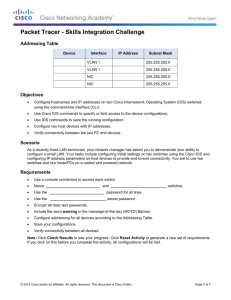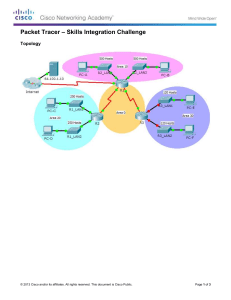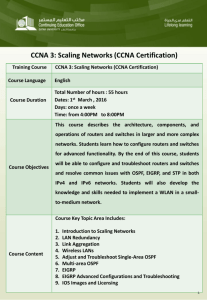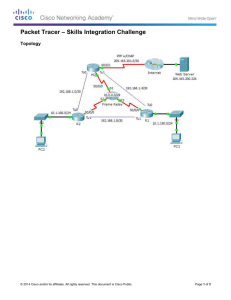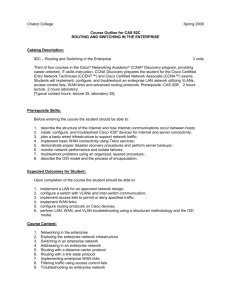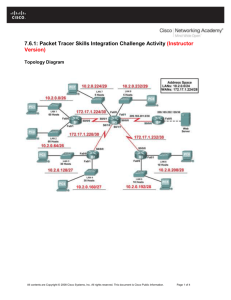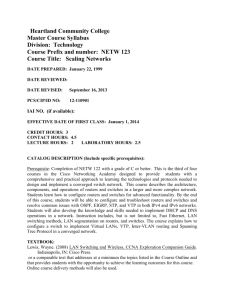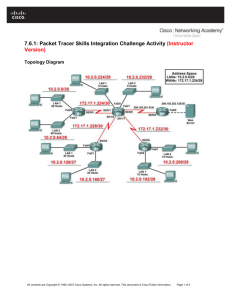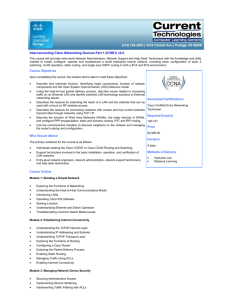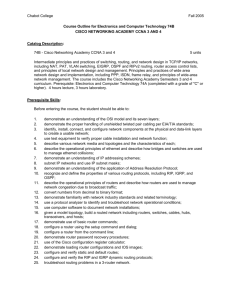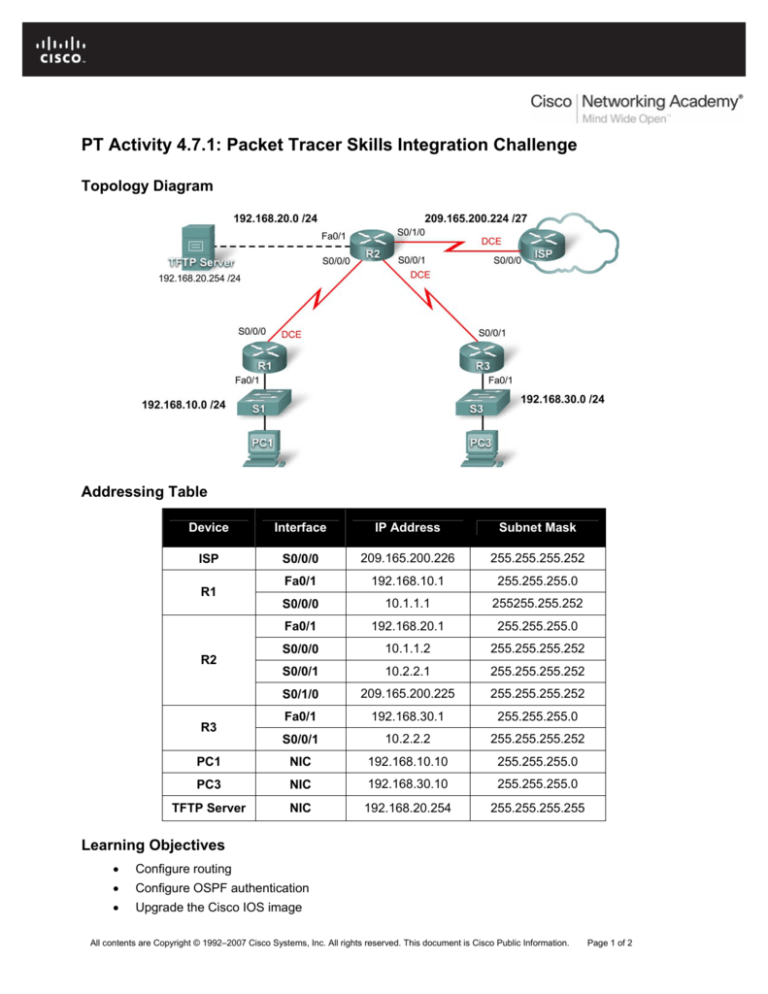
PT Activity 4.7.1: Packet Tracer Skills Integration Challenge
Topology Diagram
Addressing Table
Device
Interface
IP Address
Subnet Mask
ISP
S0/0/0
209.165.200.226
255.255.255.252
Fa0/1
192.168.10.1
255.255.255.0
S0/0/0
10.1.1.1
255255.255.252
Fa0/1
192.168.20.1
255.255.255.0
S0/0/0
10.1.1.2
255.255.255.252
S0/0/1
10.2.2.1
255.255.255.252
S0/1/0
209.165.200.225
255.255.255.252
Fa0/1
192.168.30.1
255.255.255.0
S0/0/1
10.2.2.2
255.255.255.252
PC1
NIC
192.168.10.10
255.255.255.0
PC3
NIC
192.168.30.10
255.255.255.0
TFTP Server
NIC
192.168.20.254
255.255.255.255
R1
R2
R3
Learning Objectives
•
Configure routing
•
Configure OSPF authentication
•
Upgrade the Cisco IOS image
All contents are Copyright © 1992–2007 Cisco Systems, Inc. All rights reserved. This document is Cisco Public Information.
Page 1 of 2
CCNA Exploration
Accessing the WAN: Network Security
PT Activity 4.7.1: Packet Tracer Skills Integration Challenge
Introduction
This activity is a cumulative review of the chapter covering OSPF routing, authentication, and upgrading
the Cisco IOS image.
Task 1: Configure Routing
Step 1. Configure a default route to ISP.
On R2, use the exit interface argument to configure a default route to ISP.
Step 2. Configure OSPF routing between R1, R2, and R3.
Configure OSPF routing on all three routers. Use process ID 1. Disable OSPF updates on appropriate
interfaces.
Step 3. Propagate the default route.
Step 4. Check results.
Your completion percentage should be 59%. If not, click Check Results to see which required
components are not yet completed.
Task 2: Configure OSPF Authentication
Step 1. Configure MD5 authentication between R1, R2, and R3.
Configure OSPF MD5 authentication between R1, R2, and R3 using 1 as the key value and a cisco123
as the password.
Step 2. Check results.
Your completion percentage should be 91%. If not, click Check Results to see which required
components are not yet completed.
Task 3: Upgrade the Cisco IOS Image
Step 1. Copy a newer image from the TFTP server to flash on R2.
Look under the Config tab for the TFTP server to determine the name of the newer Cisco IOS image.
Then copy the newer image to flash on R2.
Step 2. Configure R2 to boot with the new image.
Step 3. Save the configuration and reload.
Verify that the new image is loaded in RAM.
Step 4. Check results.
Your completion percentage should be 100%. If not, click Check Results to see which required
components are not yet completed.
All contents are Copyright © 1992–2007 Cisco Systems, Inc. All rights reserved. This document is Cisco Public Information.
Page 2 of 2

